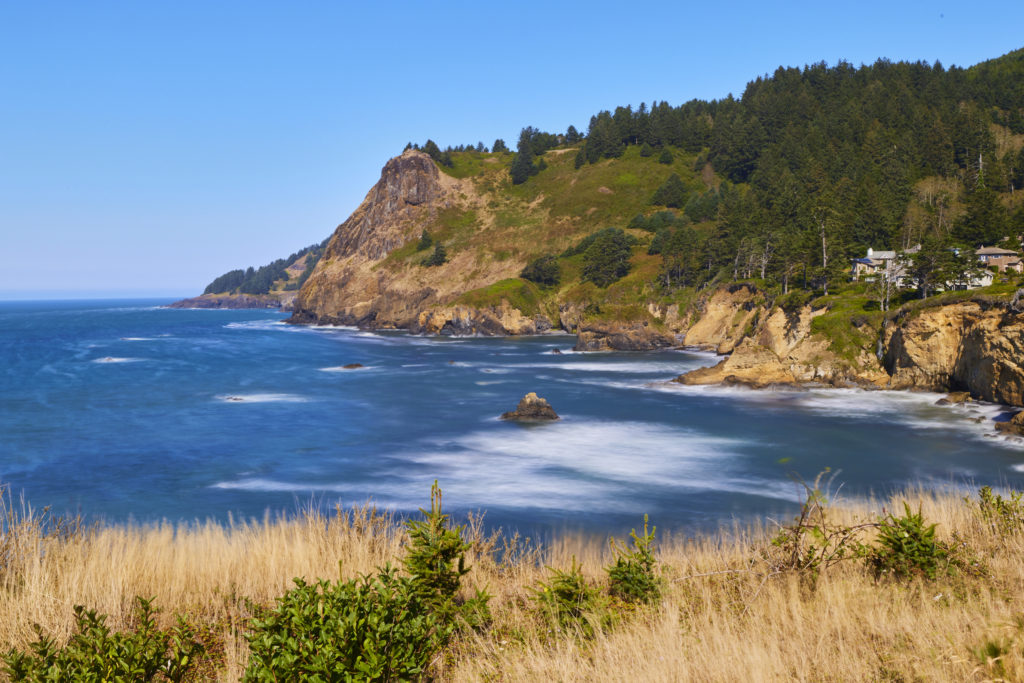Cape Foulweather
Cape Foulweather was purchased by McKenzie River Trust using a low-interest bridge loan in 2022 in collaboration with the Confederated Tribes of Siletz Indians (CTSI) and Lincoln County. Working with additional partners, including the Oregon Department of Land Conservation and Development, the land was returned to Tribal ownership in October 2024 with a grant through NOAA’s Coastal Zone Management Habitat Protection and Restoration Bipartisan Infrastructure Law funding.
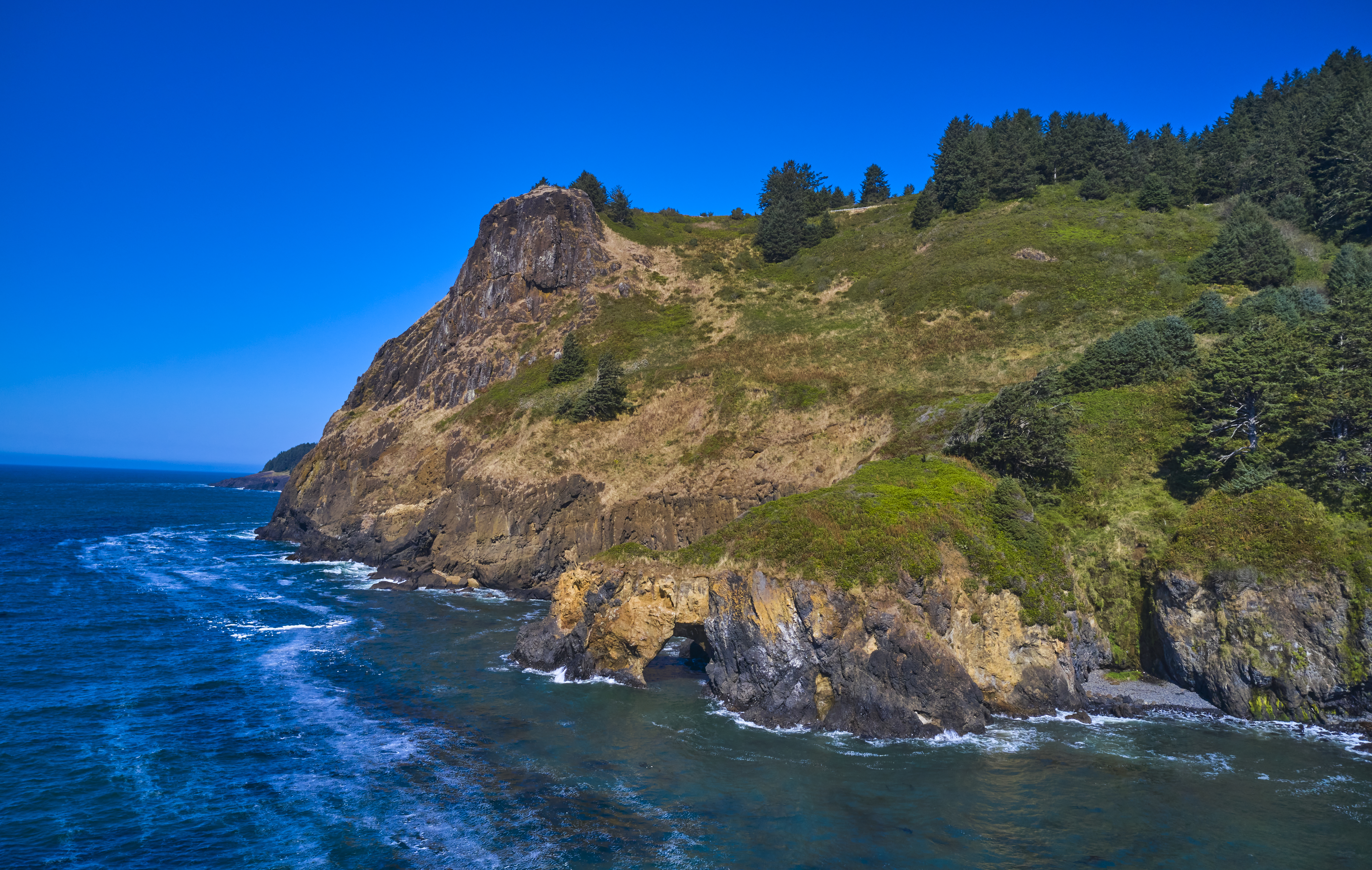
“Each place on Earth goes deep. Some vestige of the old, now seemingly eclipsed place is always there to be had. The immensity of the mutable sea before me at Cape Foulweather, the faint barking of sea lions in the air, the nearly impenetrable (surviving) groves of stout Sitka spruce behind me, the moss-bound creeks, the flocks of mew gulls circling schools of anchovies just offshore, the pummeling winds and crashing surf of late-winter storms–it’s all still there.”
– Barry Lopez, Horizon
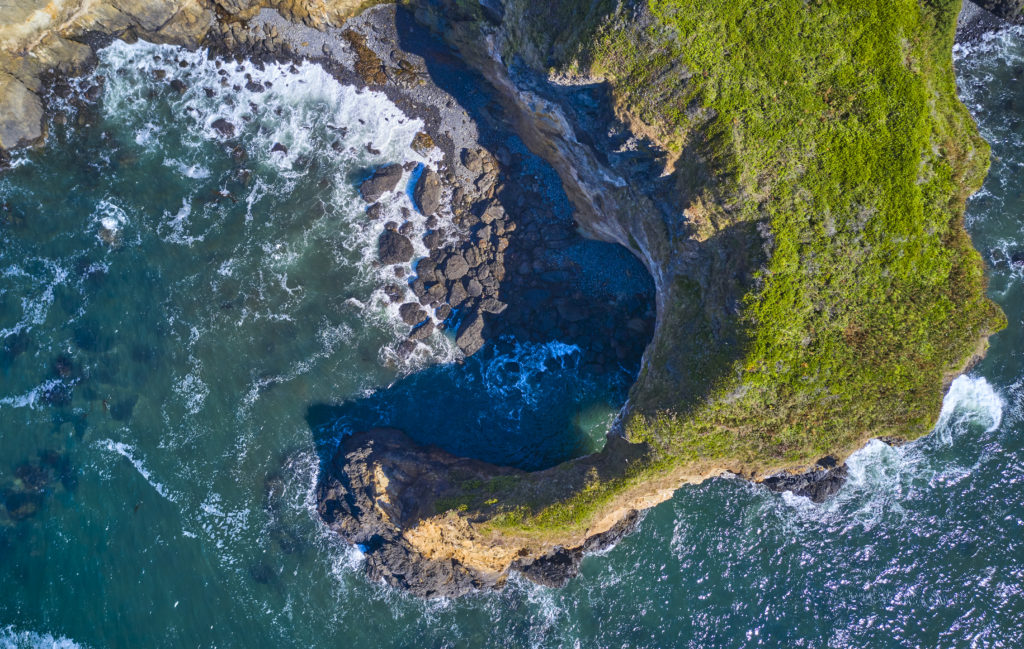
An Otherworldly Gem on Oregon's Central Coast
Towering above the Pacific Ocean, Cape Foulweather rises abruptly from intertidal sea beds into lush coastal bluffs and forest. Nestled in a stretch of Marine Garden, this area supports Harbor Seals and other diverse marine life who find sanctuary in its rocky intertidal zone. Reaching inland, the property opens uphill, covering the cliffs in rare salt spray meadows that flow into dense inland spruce forests.
Returning the Land to Tribal Care
In October 2024, the Confederated Tribes of Siletz Indians regained ownership of these 27 acres of their ancestral homelands at Cape Foulweather on the central Oregon coast. This significant land purchase capstoned a multi-year collaboration to protect the land’s ecological, cultural and scenic values.
Funded by a $2.01 million grant from the National Oceanic and Atmospheric Administration, McKenzie River Trust completed the transfer of the land back into tribal ownership. In 2022, we acquired the land from an out-of-state developer, serving as a bridge owner until the Tribe secured funding.
The area has long been a conservation priority. A coalition of partners – including the Tribe, Lincoln County, The Nature Conservancy in Oregon, the Oregon Department of Land Conservation and Development, and McKenzie River Trust – came together to secure the property, obtain funding and return the land to Tribal ownership.
About the Property
The conservation area includes 27 acres of ecologically and culturally significant habitat on the central Oregon coast. The property is at the headland of Cape Foulweather, adjacent to Otter Crest State Scenic Viewpoint just north of Newport, OR. Cape Foulweather is home to a range of important habitats that support threatened and endangered species including kelp forests, Oregon Silverspot Butterflies, and Marbled Murrelets.
The property begins in the intertidal zone of the Pacific Ocean and rises up coastal bluffs into spruce forests that break the winds above Cape Foulweather. The property includes salt-spray meadows, a rare and important habitat for the federally threatened Oregon Silverspot Butterfly. Adjacent to Highway 101, the site is visible from miles away, and its conservation contributes to the scenic quality of the area just south of Otter Rock.
The 27-acre parcel lies within the 1.1 million-acre Siletz Reservation, established by U.S. President Franklin Pierce on Nov. 9, 1855. Over the following decades, the Tribe lost most of their reservation lands through forced land cessions, leaving the Cape Foulweather parcel as one of the few undeveloped areas. The return of this land marked the first oceanfront property the Tribe recovered since those historic losses.

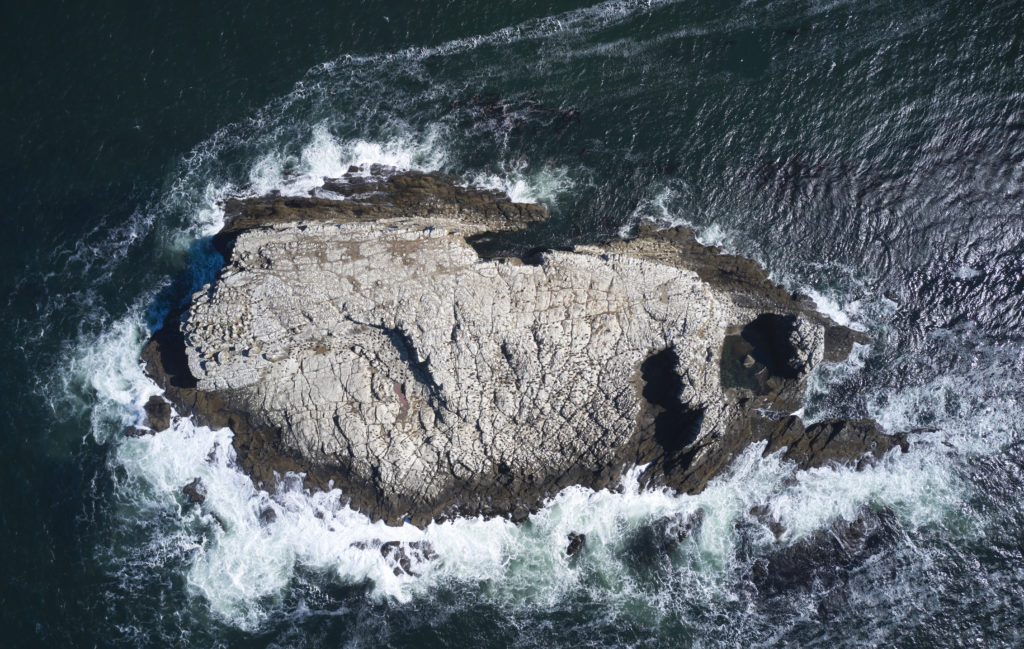

A Safe Place to Land
Intact, undisturbed salt spray meadow is a rare and important nursery habitat for many species including the Federally threatened Oregon Silverspot butterfly. The incredible diversity of habitats provide a much needed home for an abundance of species in Oregon’s central coast. Protection of this special place and providing for it’s ongoing care touches all of us from land to sea.
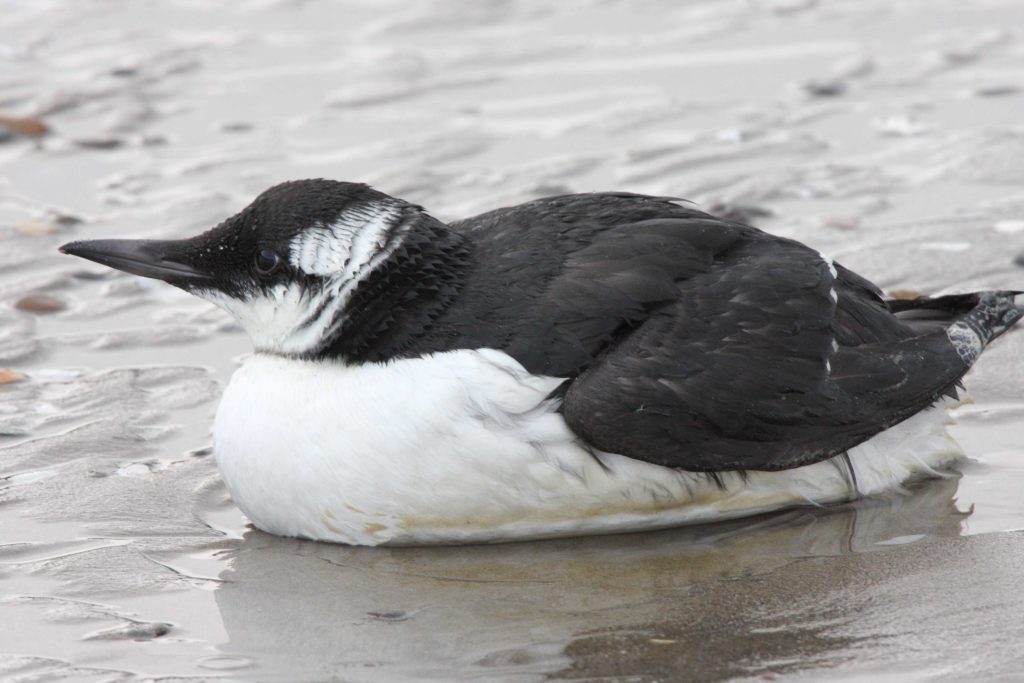
Uphill, spruce dominant forests contribute important habitat for birds such as the Marbled Murrelet, an endangered seabird that has been observed in nearby areas. These slightly strange and mysterious little seabirds live along the northern Pacific coast and rely on old-growth forests for nesting habitat. Keeping connections between shore and stand is critical to help protect this special species.
Tribal Stewardship

“Before settlement, this land was home to our families, who fished from the rocks and canoes in the ocean, and gathered mussels from the rocky shore. Now, we will have the opportunity to reinvigorate our connections to traditional lifeways.”
-Robert Kennta, Siletz Tribal Council
The Tribe plans to steward the land in a way that promotes native plant and animal diversity, connects Tribal members and youth to their culture, and engages the public in understanding the importance of Oregon’s coastal habitats for plants, animals and people, and considers Cape Foulweather a hub for cultural revitalization and ecological stewardship.
“I’m excited that this land can now be a gathering place for Siletz people. In particular, I look forward to engaging our youth, who may not be as familiar with some of our traditional practices. We’re already thinking about the needs of the land here and how we can restore kelp beds and bring back ecological fire,” Roberta Kentta shared. “Bringing Cape Foulweather home to the Tribe is an important step forward in safeguarding this special area for today and generations to come.”
This historic land return not only restores the Siletz Tribe’s connection to their ancestral homelands but also strengthens a collaboration building coastal resilience for the state. It ensures that cultural, traditional, and ecological diversity will thrive for years to come.
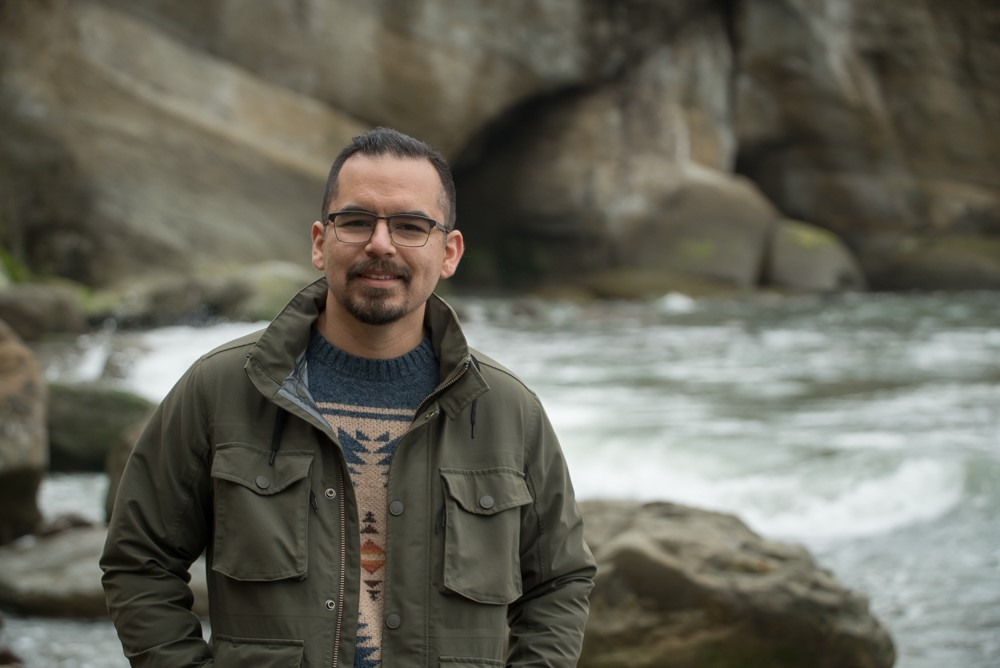
“This land was part of the original homeland set aside for the Confederated Tribes of Siletz Indians in 1855. We are honored to once again be stewards of this sacred place, thanks to the efforts of many.”
-Peter Hatch, Srchaeology Specialist with the Tribe’s Culture Department
